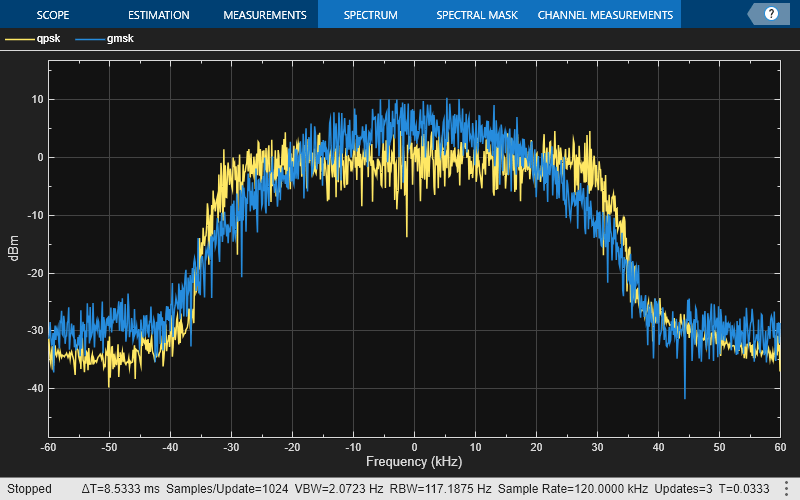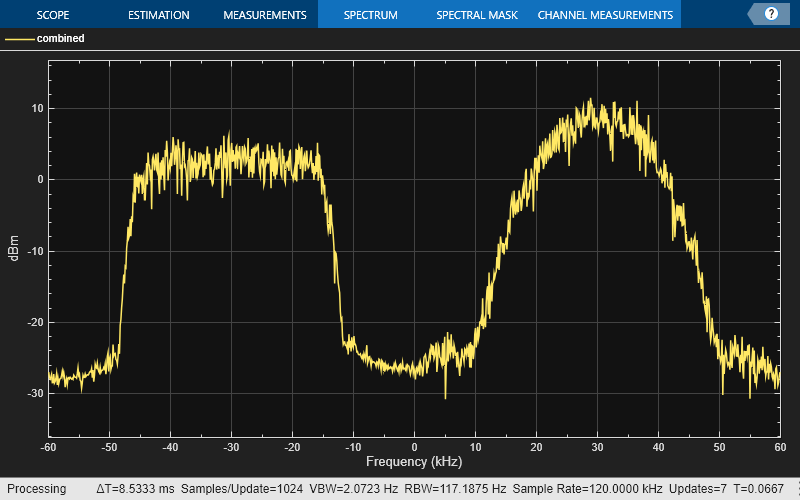comm.MultibandCombiner
Description
The comm.MultibandCombiner
System object™ interpolates, shifts input signals to the specified frequency bands, and then
combines them into a single signal. For more information, see the Algorithms section.
To frequency-shift and combine signals:
Create the
comm.MultibandCombinerobject and set its properties.Call the object with arguments, as if it were a function.
To learn more about how System objects work, see What Are System Objects?
Creation
Syntax
Description
multibandcombiner = comm.MultibandCombiner
multibandcombiner = comm.MultibandCombiner(
sets properties using one or more name-value arguments. For example, Name,Value)' specifies an input signal sample rate of 2
MHz.InputSampleRate',2e6
Properties
Usage
Syntax
Description
Input Arguments
Output Arguments
Object Functions
To use an object function, specify the
System object as the first input argument. For
example, to release system resources of a System object named obj, use
this syntax:
release(obj)
Examples
Algorithms
Extended Capabilities
Version History
Introduced in R2021b

